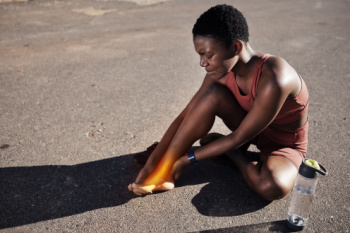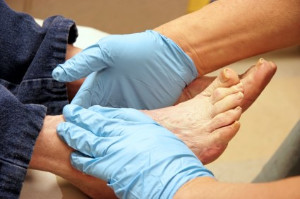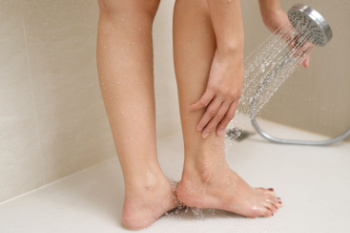 There is a complex interplay of structures in the feet that provide stability, balance, and propulsion during walking and other activities. Bones, muscles, ligaments, and tendons work together in the feet to move the body biomechanically. Assessing normal foot biomechanics helps podiatrists, or foot doctors, diagnose and treat various foot issues. By using their knowledge of normal foot biomechanics, podiatrists can identify abnormalities or dysfunctions that may contribute to foot problems, such as flat feet, high arches, bunions, or plantar fasciitis. Podiatrists may analyze a patient's gait, foot structure, and range of motion. This allows them to develop personalized treatment plans that may include orthotic devices, exercises, footwear modifications, or other interventions to address underlying biomechanical issues. If you are suffering with abnormalities in gait, range of motion, or the feet in general, it is suggested that you make an appointment with a podiatrist for a personalized treatment plan.
There is a complex interplay of structures in the feet that provide stability, balance, and propulsion during walking and other activities. Bones, muscles, ligaments, and tendons work together in the feet to move the body biomechanically. Assessing normal foot biomechanics helps podiatrists, or foot doctors, diagnose and treat various foot issues. By using their knowledge of normal foot biomechanics, podiatrists can identify abnormalities or dysfunctions that may contribute to foot problems, such as flat feet, high arches, bunions, or plantar fasciitis. Podiatrists may analyze a patient's gait, foot structure, and range of motion. This allows them to develop personalized treatment plans that may include orthotic devices, exercises, footwear modifications, or other interventions to address underlying biomechanical issues. If you are suffering with abnormalities in gait, range of motion, or the feet in general, it is suggested that you make an appointment with a podiatrist for a personalized treatment plan.
If you have any concerns about your feet, contact one of our podiatrists from Foot and Ankle Clinics, PA. Our doctors can provide the care you need to keep you pain-free and on your feet.
Biomechanics in Podiatry
Podiatric biomechanics is a particular sector of specialty podiatry with licensed practitioners who are trained to diagnose and treat conditions affecting the foot, ankle and lower leg. Biomechanics deals with the forces that act against the body, causing an interference with the biological structures. It focuses on the movement of the ankle, the foot and the forces that interact with them.
A History of Biomechanics
- Biomechanics dates back to the BC era in Egypt where evidence of professional foot care has been recorded.
- In 1974, biomechanics gained a higher profile from the studies of Merton Root, who claimed that by changing or controlling the forces between the ankle and the foot, corrections or conditions could be implemented to gain strength and coordination in the area.
Modern technological improvements are based on past theories and therapeutic processes that provide a better understanding of podiatric concepts for biomechanics. Computers can provide accurate information about the forces and patterns of the feet and lower legs.
Understanding biomechanics of the feet can help improve and eliminate pain, stopping further stress to the foot.
If you have any questions please feel free to contact our offices located in Woodbury, West St. Paul, and Edina, MN . We offer the newest diagnostic and treatment technologies for all your foot and ankle needs.



 Joint replacement for ankle arthritis
Joint replacement for ankle arthritis




